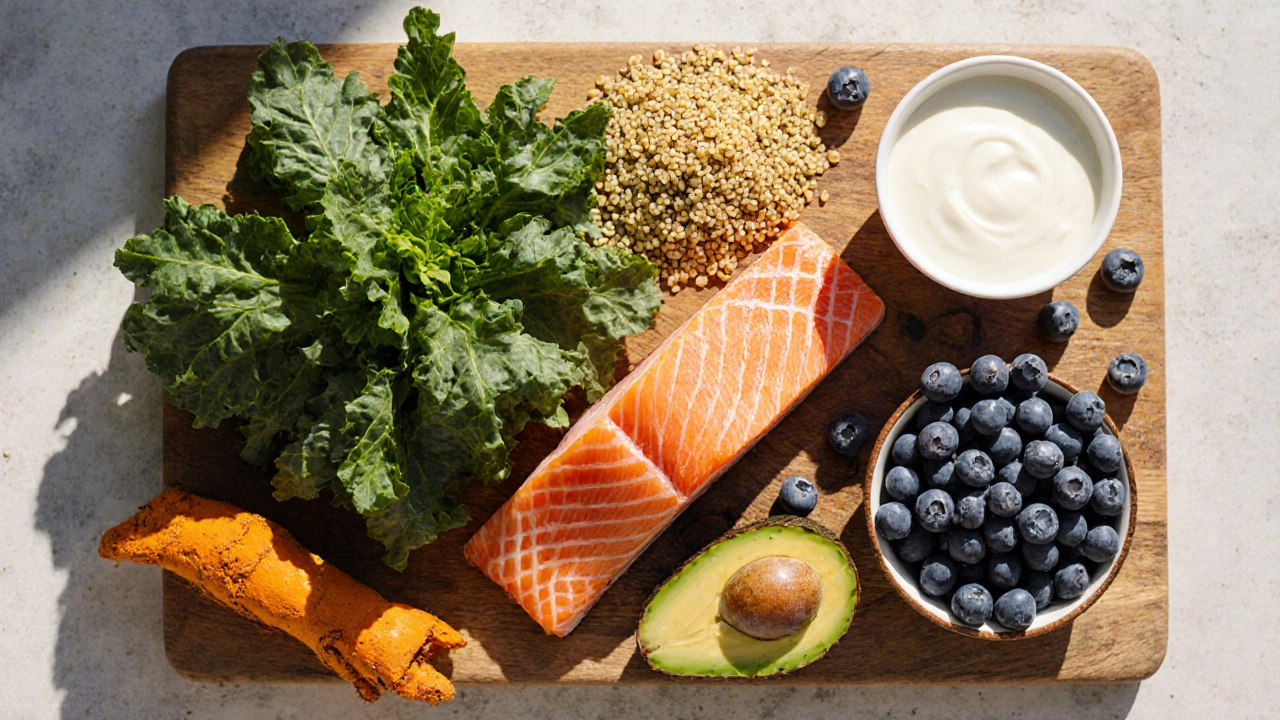Discover the world’s healthiest foods, why they rank top in nutrition, and how to add them to your diet, especially when traveling for medical tourism.
Read MoreHealthiest Food: What to Eat for Real Wellness
When you talk about healthiest food, foods that deliver the most nutrients, support body functions, and lower disease risk. Also known as nutrient‑dense foods, it plays a central role in any wellness plan. Understanding why some foods rank higher helps you cut through marketing hype and focus on what truly fuels your body.
One key group is anti‑inflammatory foods, ingredients that calm heat, dryness, and heaviness in the body. They include turmeric, leafy greens, and omega‑3 rich fish. Choosing them reduces chronic pain, supports heart health, and can lower the risk of diabetes. In simple terms, healthiest food often means foods that fight inflammation.
Another major influence comes from the Ayurvedic diet, a traditional Indian approach that matches food choices to your dosha type. If you’re a Vata, you’ll lean toward warm, moist foods; Pitta types benefit from cooling, less spicy options; Kapha people thrive on light, dry meals. Aligning meals with dosha balance not only improves digestion but also guides you toward the most nourishing options for your constitution.
For those looking to trim belly fat, weight‑loss drinks, beverages that boost metabolism or increase satiety can be a useful addition. Green tea, infused lemon water, and ginger‑spiced teas have scientific backing for modest fat‑burning effects. When paired with a diet rich in anti‑inflammatory foods, these drinks amplify the benefits of your overall food plan.
Key Factors to Choose the Healthiest Food
First, look at nutrient density: foods that pack vitamins, minerals, fiber, and healthy fats into each calorie. Leafy greens, berries, nuts, and legumes top the list. Second, consider how the food is processed. The less you alter a food, the more of its natural benefits stay intact. Third, think about personal needs—whether you’re managing blood sugar, supporting joint health, or following an Ayurvedic regimen.
When evaluating a food, ask yourself three quick questions: Does it reduce inflammation? Does it fit my dosha or dietary goals? Does it work well with any weight‑loss drinks I enjoy? Answering these helps you filter out empty‑calorie snacks and focus on the foods that truly support long‑term health.
Real‑world examples make the concept clear. A study from a leading Indian university showed that a daily cup of turmeric‑spiced milk lowered markers of joint inflammation in adults over 60. Another research group found that participants who followed an Ayurvedic‑based meal plan for eight weeks reported better sleep and lower stress levels. These findings line up with the idea that the healthiest food is not just about calories but about the broader impact on body systems.
Nutrition isn’t isolated either. Dietary supplements like high‑quality Ayurvedic herbs can fill gaps, but they work best when the base diet already includes anti‑inflammatory foods and aligns with Ayurvedic principles. Think of supplements as a safety net, not a replacement for real food.
Practical steps to start today: swap refined carbs for whole grains, add a handful of nuts to your salad, brew a cup of ginger tea after meals, and note how you feel. Small tweaks add up, and you’ll soon notice more stable energy, clearer skin, and fewer aches.
Below you’ll find articles that dig deeper into these topics—diet plans for women over 50, the best belly‑fat‑burning drinks, how to pick safe herbal supplements, and a look at Ayurvedic medicines that support weight loss. Use them to build your own personalized list of the healthiest food options and start feeling the difference right away.





